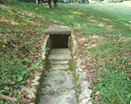Mosquito Control Methods

22 Jan 2017
Several types of mosquito are carriers of diseases, some of which are deadly. In Malaysia only Aedes aegypti and Aedes albopictus transmit dengue, chikungunya, and Zika viruses. Anopheline mosquitoes carry both human and monkey malaria while several Culexmosquitoes are known to carry Japanese encephalitis virus. Other Culex mosquitoes are also the main cause of nuisance due to their bites. In addition to treatment and healthcare, controlling and eliminating the mosquito carriers is a crucial measure to stop transmission of these diseases and nuisance.
There are several ways dengue mosquitoes can be controlled or eliminated. These methods are:
1.CHEMICAL CONTROL whereby chemical insecticides are used to kill the mosquitoes, such as by fogging. Chemical insecticides can also be applied directly to mosquito breeding sites or resting sites (indoor and outdoor spray) to kill the larvae and adults respectively;

Space spraying of insecticide for dengue control

Indoor residual spraying of insecticide to control malaria mosquitoes
2.SOURCE REDUCTION by removing containers, tyres etc. in which water can collect and mosquitoes can lay their eggs;

Public participation in destroying Aedes breeding sites
3.ENVIRONMENTAL CONTROL to eliminate the breeding by altering the environment to make it unfavourable for mosquitoes to breed. One noted example is sub-soil drainage, where drains are buried to make them inaccessible to mosquitoes;

Subsoil drainage as environmental method of preventing breeding of malaria mosquito
4.BIOLOGICAL CONTROL using parasites, predators, pathogens and symbionts of mosquitoes. The most successful biocontrol agents to date are fish and the bacteria known as Bacillus thuringiensis israelensis (Bti) and Bacillus sphaericus (Bs). Biological control has the advantages of safety to the environment and other non-target organisms, and there is much less risk of mosquito resistance developing. The use of Wolbachia falls into this category.

Bti-a biological microbial agent to control mosquito larvae

Mass spraying of Bti for dengue control
5.PERSONAL PROTECTION whereby a person can be protected from mosquito bites using repellent, mosquito coil, mat, or clothing;

Repellant lotion to protect from mosquito bite

Mosquito coil to repel mosquito
6.GENETIC CONTROL which uses genetically modified mosquitoes to result in early death of larvae or eggs that do not hatch.
7.TRAPS such as the sticky trap that attracts female mosquitoes

Aedes trapped on sticky ring
In addition to these measures, others such as legislation and health education also play important and supplementary role in mosquito control.
The release of Wolbachia mosquitoes is fully compatible with other control methods, which continue as normal, since the Wolbachia-carrying and wild mosquitoes are expected to be equally affected. In fact reducing the mosquito population size first is advantageous for the Wolbachia approach.

Comments are closed.